If someone became ill or sick and you had no access to supplies how would you handle the situation? Not many people can cope without getting panicked or stressed. It is always important to be prepared for any situation no matter where you are or what the condition. You want to make sure that you have an emergency first aid kitshould the occasion warrants it. Even if you have one at home you should make sure that you take one with you. You do not want to go anywhere without it.Traveling short distances you need to have a spare unit in your vehicle. The main problem that people often have is that they have circumstances when they need to get items which can help decrease pain or stop the result of an accident but cannot. When kits are readily available one will be able to resolve medical issues when they arise.Children are prone to accidents. Even when parents are constantly monitoring them they can do something that you are unaware of. You can try and prevent them from getting hurt, but sometimes things happen beyond your control. You can take a handy package of supplies with you in one container which houses all the items you need.
Natural disasters are consider a part of nature. One does not know when they will happen and they cannot be contained or controlled. You may have be forewarned about the area that you live in. It may be subject to floods, tornadoes, earthquakes, or hurricanes. It is a good idea to have something should one of these events occur.
When you want to get away on a little trip, or mini vacation you may not think of all the problems that may happen while you are out of town. You never know when you might need something for a bug bite or a cut or scrape. It can be costly to buy it when you need it. You can pack it in your belongings and have it when you need it.
An emergency first aid kit may not be an item that you think is requirement, but it is needed by everyone. There are many items which are included that have multiple uses. If a medical problem happens it is best to have something readily available.
The emergency first aid kit is meant to be one of the top priorities for those who happen to run a household. Depending on the size of the household, of course, will also determine how big the kit it. When traveling or going on holidays such as camping, it is important to keep such a kit in the car. Remember to be prepared for anything. But having a kit nearby it will also help keep a sense of calm in knowing that the right equipment is nearby. This is especially important when the nearest hospital could be something like fifty or sixty kilometers away. First aid kits are also of vital importance to keep in the home. Many kinds of accidents are possible around the house, so every home and household should have one nearby just in case. Even something as simple as making dinner could result in a severed artery which requires a bandage until the victim can be taken to a hospital. Of course, it is not important to get the latest or most flashy looking kit. A simple box filled with the appropriate medical supplies will also suffice. Many of these can be found at discount or second hand stores. Plenty of other ready made kits are also available out there on the market. It is up to people to find one which suits them best, depending on the size of the group who is going away or the family who inhabits the household. Especially with young children, one must always be prepared. The usual items these kits are filled with are generally scissors, emergency medicine, headache tablets and pain killers for those who happen to suffer big migraines. Bandages are also important for serious cuts. When storing the medical kit, keep it in a cool, dry place and keep it well out of the reach of children and infants. Some children will attempt to consume the medicine and this could be fatal. Always be on guard. Many parents store their kits in their bedrooms.
 It appears that world-wide, folks have a lethal fear of snakes however , our own actual real awareness of them is kind of gullible, even though we humankind are much bigger than them! People young and old alike, sometimes live in fear when venturing out in known hot spots where they may be. Folks brazenly admit to not even travelling to certain nations like Australia, imagining they're seen constantly and could be prowling under any bush lying in wait to attack. It'd surprise you to hear that death from snake bites is intensely rare but that is not to say we shouldn't be privy to the risks and straightforward provisions in the eventuality of a nip or a bite!
In case you or a member of your team or group were to be attacked by a snake then there are some fast medical steps that need to be taken to guarantee an easy and rapid recovery, or first aid treatment till the patient can be attended to by emergency services or a doctor.
Sadly because of the rarity that we ever come across snakes, the identifying of precisely what snake has bitten you may be troublesome. Hopefully you'll get a peek of the snake's marks or size before if slithers away at speed. If you can identify the snake inform the medical team straight away as this could be a key factor in what anti-venom they should use. If you're not certain then it's critical that venom-detection is employed as using the wring anti venom can similarly cause serious problems.
After you are aware you've been bitten stay still and apply the right pressure to immobilize the bitten area. Don't run away the same you would if you've seen a mouse! - The snake will do that for you as he's just as afraid of you! Attempt to utilize a splint instead of a really tight bandage, but if you need to employ a bandage make the pressure should be the same as that needed for a twist or sprained ankle. Don't take away the splint or bandage till emergency services have reached you or them.
Laying still is vital and similarly there's no need to rip off layers of clothing as even the smallest general movement will help the venom circulating farther into the bloodstream. Withstand the enticement to stroll or run to the auto in order that you can get to a hospice unless positively mandatory. Unlike say a bee sting, don't attempt to extract or suck out the venom as this could simply have the reverse effect.
Occasionally a bite can occur so fast that you may not notice, or there's a delayed reaction till you realize what's happened. However there are some basic symptoms which should confirm if you have fallen prey to a bite. Symptoms like headache, nausea, vomiting and abdominal discomfort are good signals. Continued bleeding from a bite or distressing, tender lymph nodes, together with blurred vision, muscle weakness or paralysis are all swift indications you've succumbed to a bite.
Trying to find medical help is critical and speed should be of extreme haste. If in outback distant areas then flying doctor services should be called - they're going to have the information and experience. Ideally if you're traveling in an out-of-the-way area where snakes are common then you should usually take a travel medical kit outfitted with anti venom or at the very least the power to form a good splint. You can even have to hand an easy chart of snake marks for the area to help identification. There are numerous survival medical kits which now cater for the outside prospect of a snake bite. As with any emergency the best advice isn't to panic, keep calm and remain with the injured person to guarantee their safety and to give moral support till emergency staffs arrive.
The chance to travel to remote locations are increasingly being a little more accessible than ever before and is a spare time activity which many enjoy when they get the chance either for short weekend trips or much longer holidays. The astounding scenery, wildlife, climate and calmness forces us like never before to escape the hustle and bustle of our stress filled city life-style. We've been truly fortunate to have got the chance of savouring mother nature at its very best which is still natural in its beauty. With ownership of off-road cars more usual, taking off in our 4WD's Camper vans or UTE's is less difficult than it ever used to be and putting such vehicles truly to their original intended purpose, rather than clogging up shopping centre car parks! Whilst there are many experienced adventurers individuals and families who have racked up substantial off road experience there are more and more less experienced people who are venturing on such trips to unfamiliar territories and planning a safe enjoyable trip is essential for your group. In high season it is usual to hear of disasters and warnings from security road groups of the requirement to certainly be equipped for your trip. These notification go much further than the obvious need to top up your oil and water and ensure your vehicle is roadworthy. The percentage of emergency evacuations is alarmingly high where city dwellers have not heeded such advice and are quite blasé as they stride off down the road. The listing of very important items and procedures is quite extensive and realistic but few go the whole yard. Here are some helpful basic recommendations of how to get ready for your trip: Take sufficient food for every person in your group for at least a couple of days. Form good quality roadmaps for your route, preferably physical maps rather than basic maps printed off the internet. Lug plenty of water but in more compact bottles - not merely one big tank and drink water regularly on your trip not at the last moment when an emergency attacks. Take some matches or a lighter for those camp fire to keep you warm - temperatures will always fall roughly as sunset falls. Verify where the nearby small city is on your trip where you can replenish essential items and figure how far you could be from there at any given time. Guard yourself from the sunlight using top quality Ultra-violet sunscreen not low cost home brands and carry a wide brimmed hat to shade the intense day time sun. At all times have a fully inspected emergency first aid kit and be acquainted with its contents doing a comprehensive check before you leave. Make sure your vehicle holds a good fire extinguisher for your safety either from the vehicle or camp fires and so forth.Be sure you have adequate insurance for you 'and' your vehicle - do not take probabilities.With sensible preparation far ahead of time you can genuinely enjoy the experience that nature has to offer but if you cut corners and make do, then tragedy or the need for evacuation could quite easily spoil a wonderful trip. Overseas visitors are particularly vulnerable - make best use of local organizations that can provide valuable advice, experience and free information.There are plenty of willing individuals pleased to help your trip and safe treasure memory. 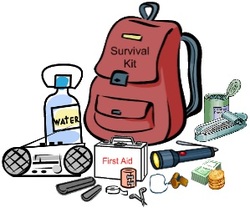 FIRST AID KITS FOR SALE
Most of us have been warned about the dangers of driver fatigue specifically on much longer journeys as we try to find our desired destination in record-smashing speed! But with the rush and excitement of a long journey and the chance of some journey we push ourselves just that bit further than we should. 'Oh perhaps I could just drive for another hour before we have got a rest or lets clock up another 100kmh before we have that toilet break or cuppa! It is in normally advisable that we stop each 2 hours and take a short break, re energize our bodies and have a stretch even exclusively for 5 minutes or thereabouts, take a drink or perhaps better switch drivers and put on your I-pod to hear some music. Speed is also a serious danger in the need to get somewhere quickly. In distant areas Australia wide and the states it's not uncommon to hear about sad stories of drivers who've had a major accident thanks to the above. If only they'd taken a small amount of time out or slowed down. Usually on remote trips the monotony factor sets in on those long straight roads and it's so unnoticeable to lose our concentration and when we are traveling at such high speeds the smallest shortage of care, changing the CD, checking your cellular telephone, is all that it requires to drift off the road and disaster hits. Be conscious of all traffic at every point, especially the massive road trains and wagons that often take far riskier hazards with speed and fatigue. Where possible travel as near possible in day light hours... The prevalence of accidents increases significantly once light falls into the dark of night. Dark roads and more so rambling local animals are indifferent to traffic. At nightfall or dawn is when to be most conscious of straying kangaroos or farm animals. The risk is they are simply blinded by auto full high beams or their hearing is bad enough that they haven't any concept you are rushing toward them. For a few unfamiliar reason many animals like to just have a snooze in the middle of the road, especially around full moon when they're confused with the change of light. Be conscious of the particular road conditions too. With upkeep of remote roads at a record low conditions can be perilous and at various times of the year. Summer months bring dust and grit which can simply lead directly to bad traction while similarly winter months and torrential rain may cause roads to be greasy and the necessity to travel at much lower speed is important. Before proceeding on such trips do some sensible calculations of predicted journey times and be conservative in the distance you can travel at one time taking under consideration those needed rest breaks. Other preparations are vital too and not only the necessary automobile upkeep. Make certain you are traveling with a complete recent Travel Emergency Medical Kit which is kept convenient to be used in any accident or emergency. Add to your kit any little items for your individual medicines and make certain you have lots of excess water available both for you and the vehicle in a variety of plastic containers. Most long trips can be pleasurable and event free if you apply some reasonable pre planning and common sense while driving. Take care and arrive in one piece safe and well to enjoy the reward of a long tedious trip.
A family that values their health is that which has a first aid kit both in the home in the car. Make sure that each time you are going for an outdoor activity you carry along a first aid kit, when traveling or going on a vacation you’ll bring a car first aid kit or travel first aid kit with you. A first aid kit can be available in the Red Cross offices or from the local drug shops. It can also be made to suit the purpose of offering first aid. The first aid kit are designed in different sizes and shape, they are also designed for specific activities. So when you walk in a drug shop you will get first aids kits that are for camping, hiking, boat riding, air crafting, marine usage etc. you need to be very concerned about the contents of the first aid kit. Ensure that the kit has all the necessary things that will be useful during the need to render some first aid. Also be in the habit of checking regularly to see if all the items are available in the kit. Make sure you replaced the used items and ensure that you also have the other essential things you might need like flash light, make sure it has batteries and is working properly. Whenever you are intending to travel or go for an outdoor activity, make the necessary arrangements to carry with you an emergency first aid kit all the time. These are some of the contents that you should have in your first aid kit before you travel. Antiseptic wash: Most of the places we visit are so remote that source of water is not always available and so washing wounds and using an ordinary soap is not enough. It is to this effect that a wound antiseptic wash will be of use. It is not only helpful in washing but also acts as a pain reliever in the minor cuts in our bodies, this is because it is usually in a form of liquid that produces steam that removes germs from wounds. Gauze pads:These need to always be a part of the equipment for first aid. They are in many sizes, though it’s advisable to get the biggest size and when necessary you could just cut them down. Scissors:It is useful in cutting some of the items that are useful for first aid. The items which can be cut by a scissor include adhesive tapes, gauze pads; bandages etc. make sure that the scissors are not blunt to avoid wastage of time. Other items to include: • adhesive tape • instant cold pack • bandage • latex gloves • tweezers • band aids • sting and bite ointment or cream
Younger generation of today’s time are getting so adventurous and risk takers coupled with the many electronic progress. Their youthful minds have grown to be so advanced including those who are just first graders know already the numerous ways to go with the flow. In accordance with this, their security and safety has become a dilemma. How are you going to defend your children outside the house as they explores the modern world ? This is where you'll need some of these first aid bag commonly available in stores these days. The primary things that comes to your mind when your child goes out in your home is certainly his protection whether he’ll just be playing baseball or do rolling skating with his friends, play some video games with your neighbor, or go to school. As parents it is a personal instinct to secure his safeness wheresoever he comes. So he needs to have a first aid kit with him to be certain he is guarded in every little thing he does. He should have a portable emergency first aid kit so it would be more convenient on his part to bring the item. Place the it inside of his day pack so he can use it straight away anywhere he is. You can also buy a classy emergency first aid kit if offered or make one yourself if your child is in line with fashion and style. You must be imaginative as much as possible to let him agree with bringing one for himself. You also need to discipline him to not engage himself with dangerous physical activities and take extreme caution every time they have outdoor activities and out of town camping.. The first aid kit for sale should have to be fit for what he needs and complete just about everywhere he gets to. If your child has asthma, he must have an readily available medication in his first aid kit and a refill for inhalers to make sure he will never run out of medication. If he has hypersensitivity may it be bees, peanuts, eggs, and so many others, make sure he has with him an antihistamine and an epinephrine to combat the effects of those issues. The first aid kit contents ought to be complete enough for his needs on every circumstance. But then the most effective measure to employ after all would be teaching him to avoid those pathogenic agents as much as possible so they can stay away from medical troubles. Teach your children on the way to use the first aid kit contents so they could be more geared up in the case of emergency instances. You also should choose meticulously the first aid kits for sale that you are planning on purchasing to ensure that it truly is useful enough to deal with your children’s need.
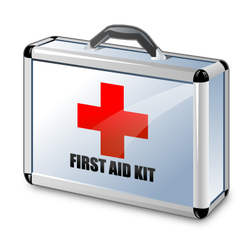 To get started with, a first aid bag is simply not normally a handbag these days. The concept of a first aid bag has significantly given way to a “ first aid kit,” since first aid items more likely to be carried in tough, rainproof cloth bags or perhaps heavy duty plastic-type cases than in an actual handbag. However the term still sees some informal usage among emergency medical professionals and army field medics whose trauma response tools and supplies are often carried in duffle bag or rucksack-shaped packing containers. For such kits a trauma bag is the popular word among makers and emergency professional medical associations. Regardless of whether its name is a kit or a bag, containers are generally built to be rainproof, tough, and to open completely. Pouches typically unzip in order to lay spread out flat on the ground and provide complete access to all of the kit's contents. Plastic cases commonly have a flip-top top that open to exposes equipment and supplies for simple selection in the heat of a nerve-wracking moment. Exact duffle-style professional first aid bags typically have a couple of huge side pockets to help with finding the right equipment. Also, the contents inside the primary pocket can be sub-packaged by category in plastic bags or smaller sized transparent pockets. One example is, a duffle-style first aid bag may contain a plastic wound dressing bag, an oral medicine bag, a rehydration bag, and so on. When first aid kits come in cases and pouches, rainproof cloth pouches are the most typical for home, travel, and car kits. Plastic hard-shelled canisters and metal first aid cabinets are normally seen in workplace environments. Identifying the right first aid bag or kit is normally based on the location the place it's going to be placed and kept ready for use at. For a lot of shoppers, a kit will be for their home, car, or traveling. The items in these kits differ somewhat. Typically home and travel kits have equipment and supplies suited to treating minor injuries and ailments. Car kits contain additional first aid contents for stabilizing serious injuries such broken bones and lacerations. However, home disaster preparedness kits and first aid travel bags specialized for visiting remote locations are also stocked for treating serious injuries. Regardless of the terms, first aid bags or kits are only beneficial if obtained just before an unexpected emergency. The best-stocked kit in the world is of small use if it's still sitting on a store shelf when an accident or emergency situation strikes.
It is advisable that you utilize a survival first aid kit when you plan to travel and it should match the kind of trip you will have. You can make your own but you have to make sure that it is complete with the necessary equipment for emergency situation. If you plan to stay longer in the wilderness or decide to have more extreme activities then it is necessary that you have more extensive first aid kit and your skills and knowledge about first aid is also wide-ranged. There are many factors you need to consider when you plan to go out into the wilderness. First is the number of people who will be participating with you in the trip. The more people there is the greater is the number of medical supplies you need to bring with you since you need to anticipate a larger number of person who might need medical assistance. You should also ask if they have pre existing medical concerns so you can include their medications and other health needs in the first aid contents. You should also take considerations on the area of your wilderness trip giving particular attention on the impending dangers and hazards of the place so you can anticipate the type of materials to bring in your survival first aid kit. For instance, the place is prone to bee stings and insect bites, you should bring some prophylaxis against allergic reactions and anti itch cream as well as insect repellents to drive away the insects. You should also take particular attention to the terrains and landscape of the area so you can make sure to bring pads for protection as well sole protectors inside your travel survival aid kit. Another point to consider is the length of your trip. If you plan to stay longer in the area, you should have an extensive supply of health aid products in your first aid kit. Aside from those items, you need to include also an ample amount of food and water. However if you think it would be heavy enough you can simply bring with you a water purifier placed inside your first aid contents to be used in making the water potable for drinking. You need to consider also the distance of your destination to the nearest medical facility of the place. You should secure a hotline number from them for a faster response in case emergency situation arise. Your travel survival aid kit will only render a first hand care but a proper and more elaborate treatment is a must especially if it’s a critical case. The very last thing that needs some consideration is the activities you will be doing in the place. If it entails hazardous and risky pursuits like bungee jumping, mountain climbing and the likes, then your survival first aid kit should always be ready and prepared during these times. You always need to think that the safety of the person often exceeds all types of enjoyment and leisure.
FACT!!! Only a few people carry a first aid bag with them whenever they travel out of town or when they are in their vehicle close to home. That's a serious mistake and if we will be making one change today it should be to get a first aid bag in our vehicles that we normally drive in. For people with company vehicles you ought to have them too. They can fit into a trunk, glove box, console, or tool box. There are many basic things you want to have with a car first aid kit. You want to have bandages, flares, gauze, gloves, ointment, and scissors. You can include other items to your car first aid kit that you would like to have. For instance a blanket could be a nice item to have too. As a side note, any time you will be making use items from your first aid supplies you need to replace them right away. Such a kit won’t do you any good if important items are missing. When you go on holiday or travel for work, the very last thing on your mind is likely to be in emergency situations. Yet whenever we listen to the news or search the web we are reminded of people facing such adversity on a daily basis. We can’t eliminate that we will be part of such a scenario so be ready for it. With a travel first aid kit you will always be able to contribute in some way to help. If you're limited for spaces consider a compact travel first aid kit that you can get into your luggage with no problems. Let us hope we will never need to use any of the first aid kits for sale that we purchase. However, if that need does arise we'll be very thankful that we had the supplies we needed all set. We can get first aid kits for sale on the web or from local retailers so there is no reason not to have it all set to go regardless of where we happen to be. The first aid kit could be what really helps our family, or even a complete stranger.
|
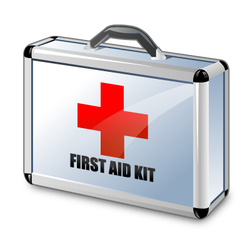
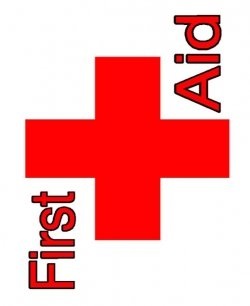
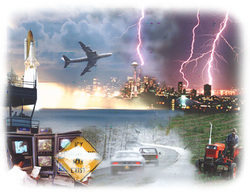
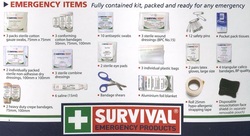

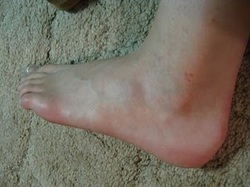
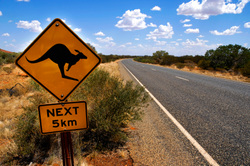

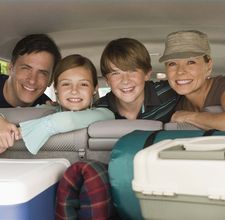
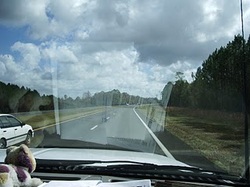
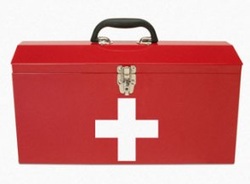


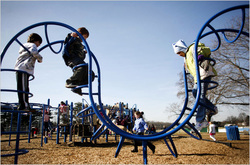

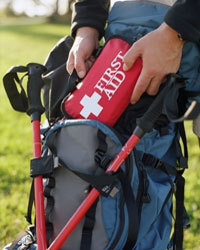
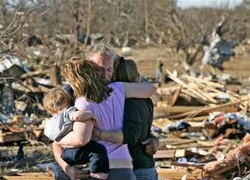
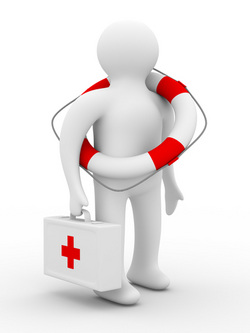
 RSS Feed
RSS Feed